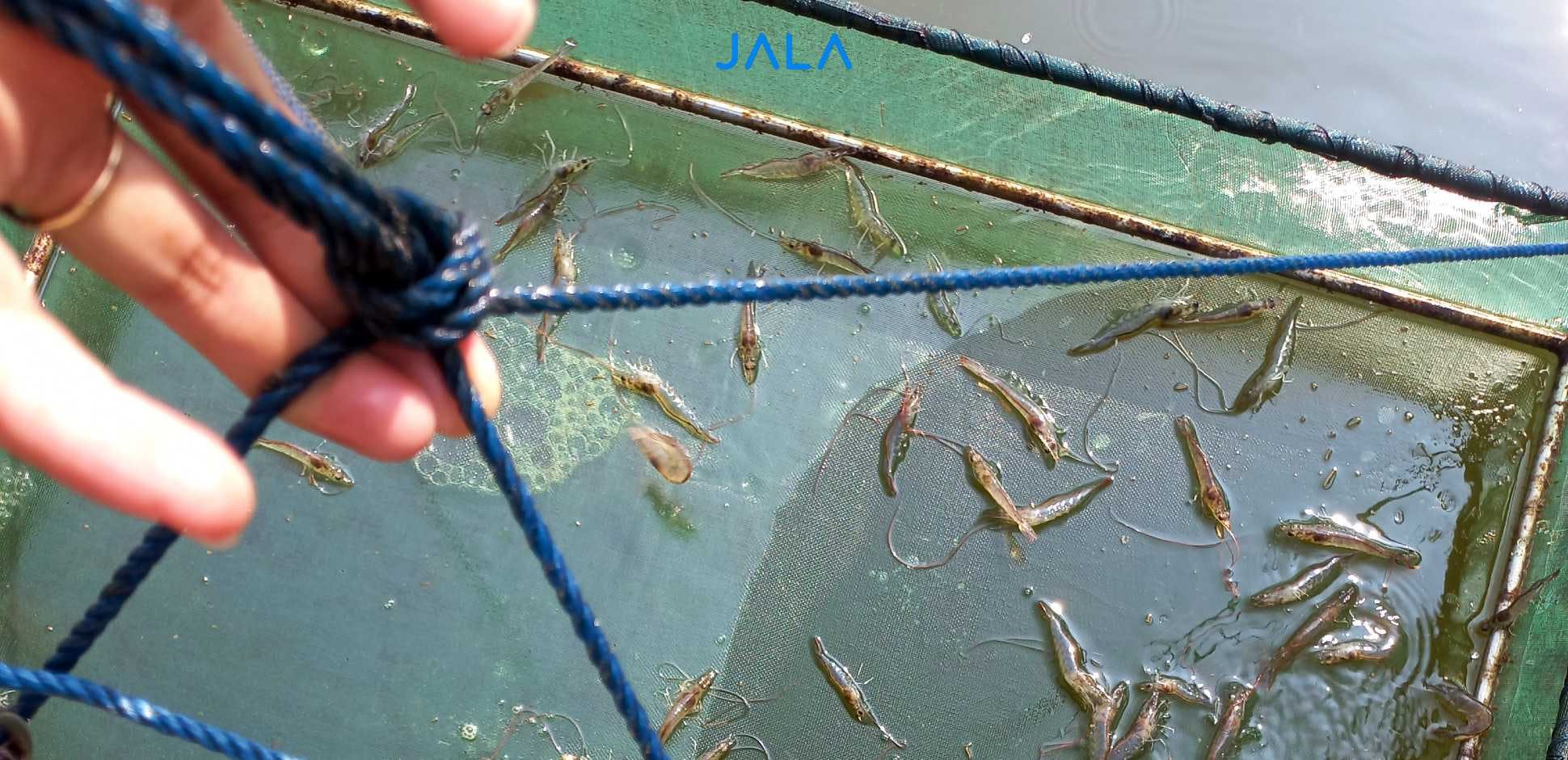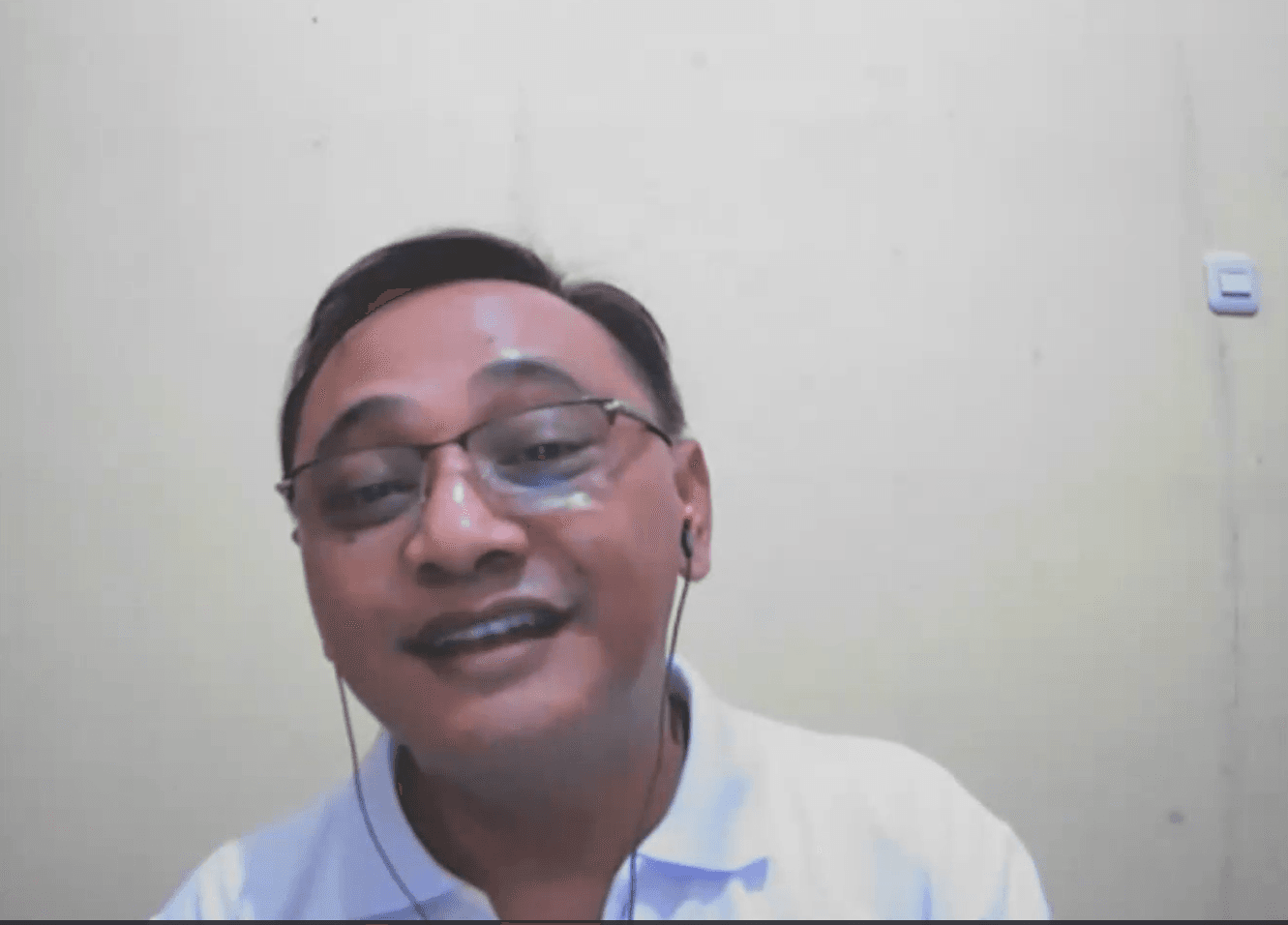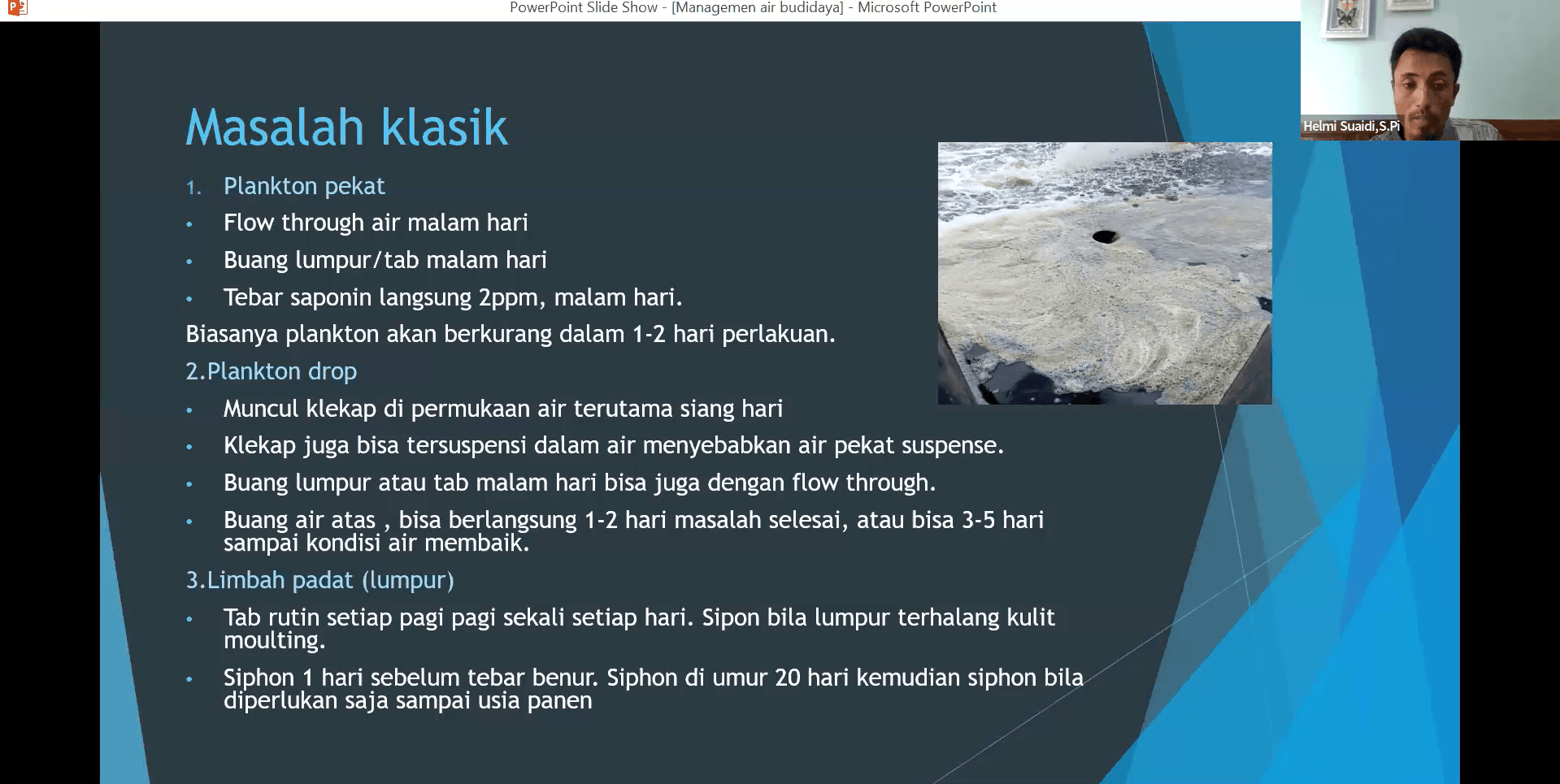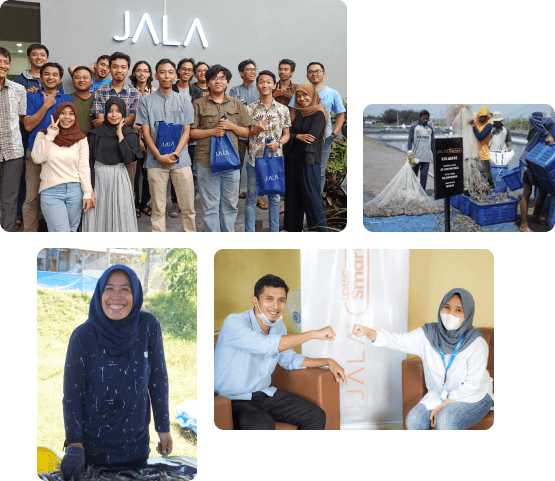
Efficiency is a key factor in achieving success in shrimp cultivation. Cultivation efficiency can be evaluated through various parameters, such as feed efficiency. In this context, water quality is also a key factor which impacts feed management. Therefore, farmers need to master cultivation water management properly. To equip farmers with the necessary insights into efficiency and cultivation water management, JALA held the SHRIMPS TALK online webinar on December 22 2023.
This time, the SHRIMPS TALK webinar was attended by 2 esteemed speakers: Ir. Yanuar Toto Raharjo (Chairman of SCI Banyuwangi and Chairman of Commission III for the Development of Science and Human Resources at SCI), who shared about Shrimp Cultivation Production Efficiency as a Solution to Declining Shrimp Prices, and Helmi Suaidi, S.Pi. (Senior Practitioner and Technician), who shared about Practical Steps in Pond Water Management. 78 attendees participated in the webinar.
Shrimp Cultivation Production Efficiency as a Solution to Declining Shrimp Prices

Common problems in Indonesia's shrimp cultivation include the high prevalence of shrimp diseases and declining shrimp prices, leading to business losses for many shrimp farmers. Farmers typically cope with unfavorable business conditions by reducing production costs. However, a more appropriate approach is to enhance the efficiency of production without compromising essential inputs for cultivation. A shrimp farm can be said to have good efficiency by assessing its productivity, and technical success in cultivation should be prioritized by farmers
To determine cost priorities, Ir. Yanuar provides the following guidelines, from highest to lowest priority:
- Feed: Approximately 50% of production costs. Efficiency can be improved through water quality management to control FCR (Feed Conversion Ratio) and the use of autofeeders.
- Energy: Approximately 18% of production costs. The use of energy from aerators, pumps, and other supporting tools should be adjusted to the carrying capacity of the pond.
- Saprotam (production materials): Approximately 12% of production costs. The selection of treatments (disinfectants, probiotics, minerals) should be based on evaluating farm background and clear data recording of water quality, rather than trial and error.
- Shrimp fry: Approximately 11% of production costs, selected based on carrying capacity and cultivation system. Choose certified shrimp fry and conduct fry scoring.
- Indirect costs: Approximately 9% for other costs such as labor and maintenance.
Issues in shrimp cultivation that can arise at any time need to be addressed wisely by maintaining balance.
Practical Steps in Pond Water Management

Different cultivation systems that already exist cannot solve the relatively constant problem of shrimp diseases caused by wastewater in source water and cultivation ponds. To truly address this issue, it is crucial to prioritize the physical management of wastewater to prevent uncontrollable chain reactions.
Cultivation water management can be divided into tank water management and pond water management. Both should be executed with high standards through routine observations, as maintenance practices in each pond may differ based on specific pond conditions.
For tank water, it is advisable to prepare two tanks for alternate use. Allow water to settle for 6-24 hours to weaken bacteria and viruses. Then, perform a two-stage sterilization with strong oxidizers, TCCA and H₂O₂, to kill bacteria and viruses, including those hiding in biofilm. If the sterilized tank water is not clear, repeat the process until it is clear.
For pond water, fill the pond gradually as needed, and remove mud every morning. Additionally, apply saponin-soaked water in the morning and evening from fry stocking until harvest. Conduct occasional surface water drainage and siphon the bottom of the pond to remove mud and debris. Siphoning should also be done one day before stocking and at DoC 20, and then only as needed until harvest.
The 13th SHRIMPS TALK webinar brought many new insights to the attendees, who were eager to ask their questions relating to the topics presented. Through this series of discussions, JALA hopes to help farmers reach a more productive and sustainable cultivation.
If you are involved in the shrimp cultivation industry and want to improve your farm productivity with the latest information, tips, and insights, follow JALA’s Instagram at @jalaindonesia so you don’t miss the next SHRIMPS TALK and other upcoming events. See you in the next SHRIMPS TALK!





